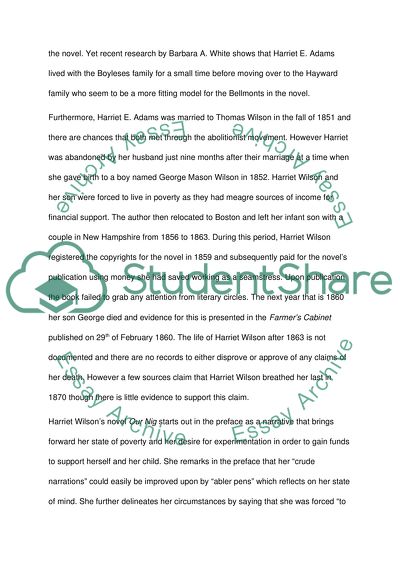Cite this document
(“Critical Essay on Our Nig by Harriet Wilson Example | Topics and Well Written Essays - 2000 words”, n.d.)
Retrieved from https://studentshare.org/literature/1433240-critical-essay-on-our-nig-by-harriet-wilson
Retrieved from https://studentshare.org/literature/1433240-critical-essay-on-our-nig-by-harriet-wilson
(Critical Essay on Our Nig by Harriet Wilson Example | Topics and Well Written Essays - 2000 Words)
https://studentshare.org/literature/1433240-critical-essay-on-our-nig-by-harriet-wilson.
https://studentshare.org/literature/1433240-critical-essay-on-our-nig-by-harriet-wilson.
“Critical Essay on Our Nig by Harriet Wilson Example | Topics and Well Written Essays - 2000 Words”, n.d. https://studentshare.org/literature/1433240-critical-essay-on-our-nig-by-harriet-wilson.


